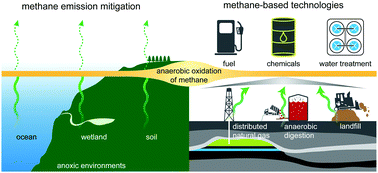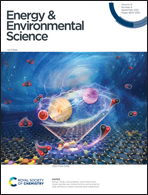Roles and opportunities for microbial anaerobic oxidation of methane in natural and engineered systems
Abstract
Reduction in methane emissions to the Earth's atmosphere is a critical strategy for tackling climate change. It is well established that anaerobic oxidation of methane (AOM) associated with sulfate reduction functions as an important methane sink in marine sediments. However, recent findings show that AOM uses diverse electron acceptors across a range of habitats, prompting examination of the potential role of AOM in mitigation of methane emissions and global climate change in non-marine environments. Methane is also a valuable energy source, widely used for production of electricity. Recent studies suggest that AOM could be used to produce liquid fuels/chemicals. The potential involvement of CO2 in product formation is particularly exciting as methane bioconversion could act as a net sink of CO2. The discovery that AOM is able to transfer electrons to solid electron acceptors suggests that methane may be a suitable source of electrons for a bioelectrochemical, biosynthesis cell. In addition, AOM has been used for pollution control and environmental remediation, such as nitrogen removal from contaminated water. Herein, we review and discuss implications of the latest scientific discoveries in AOM for methane emissions from aquatic and terrestrial environments, and methane as a feedstock for various biotechnology platforms.

- This article is part of the themed collection: Energy and Environmental Science Recent Review Articles


 Please wait while we load your content...
Please wait while we load your content...